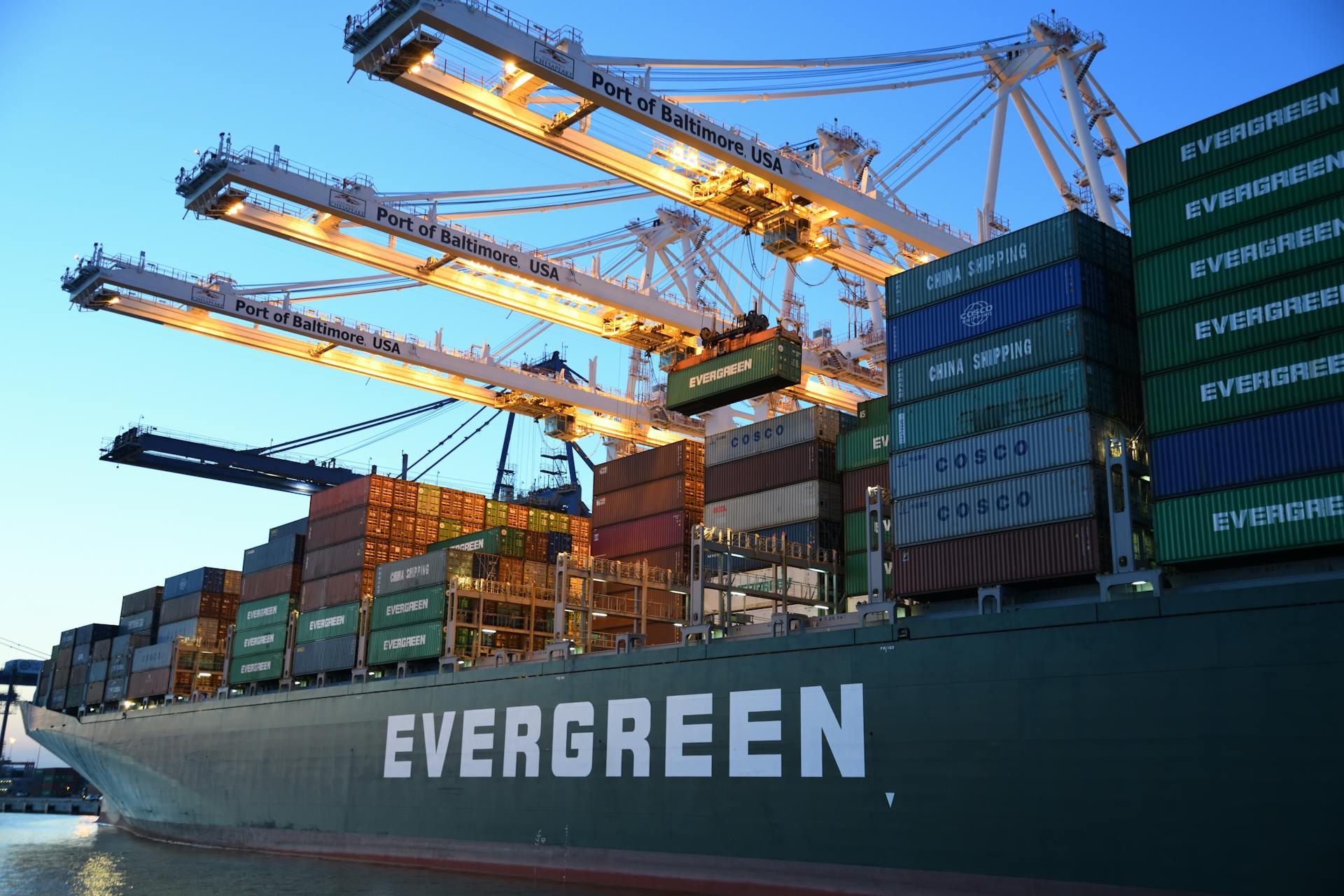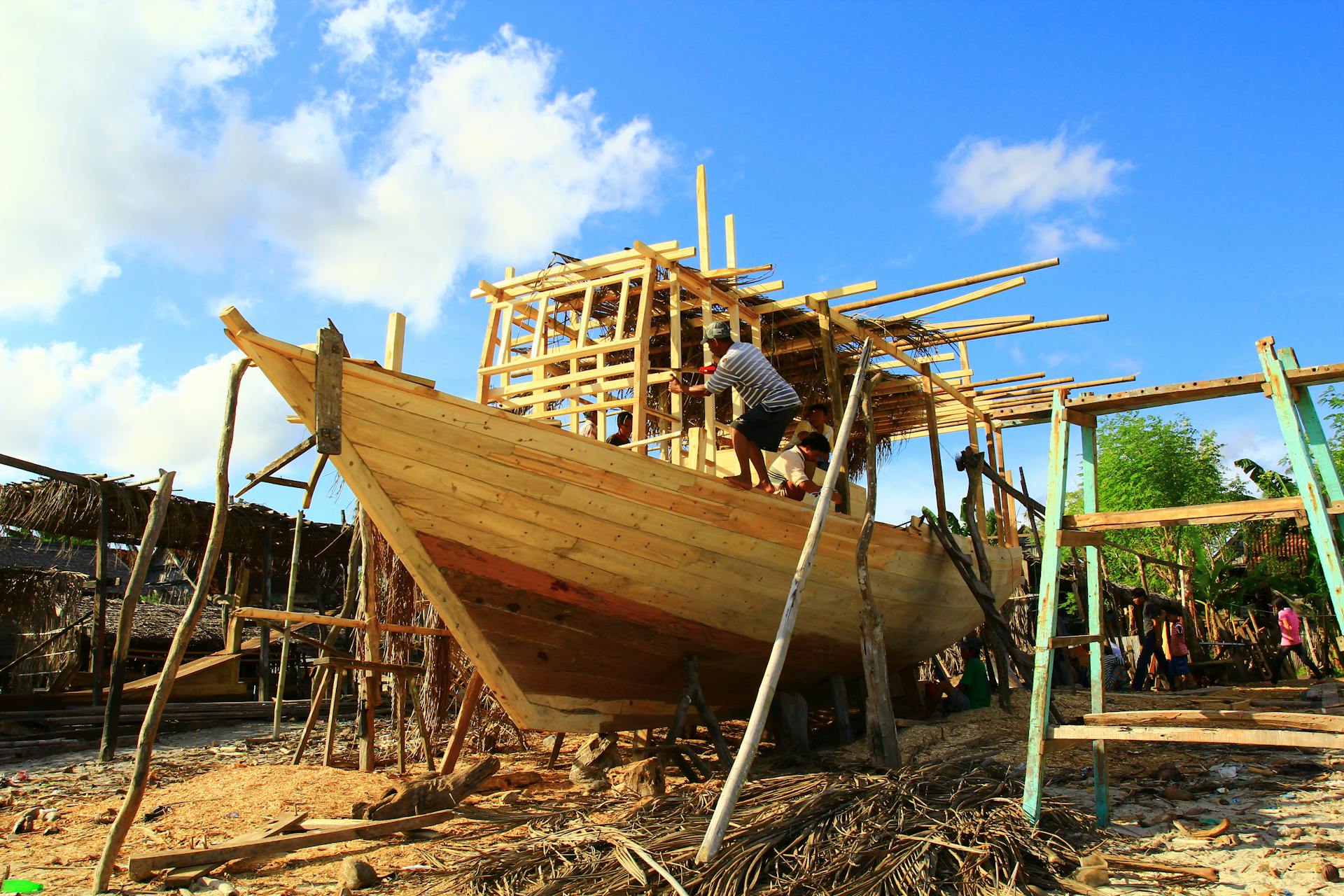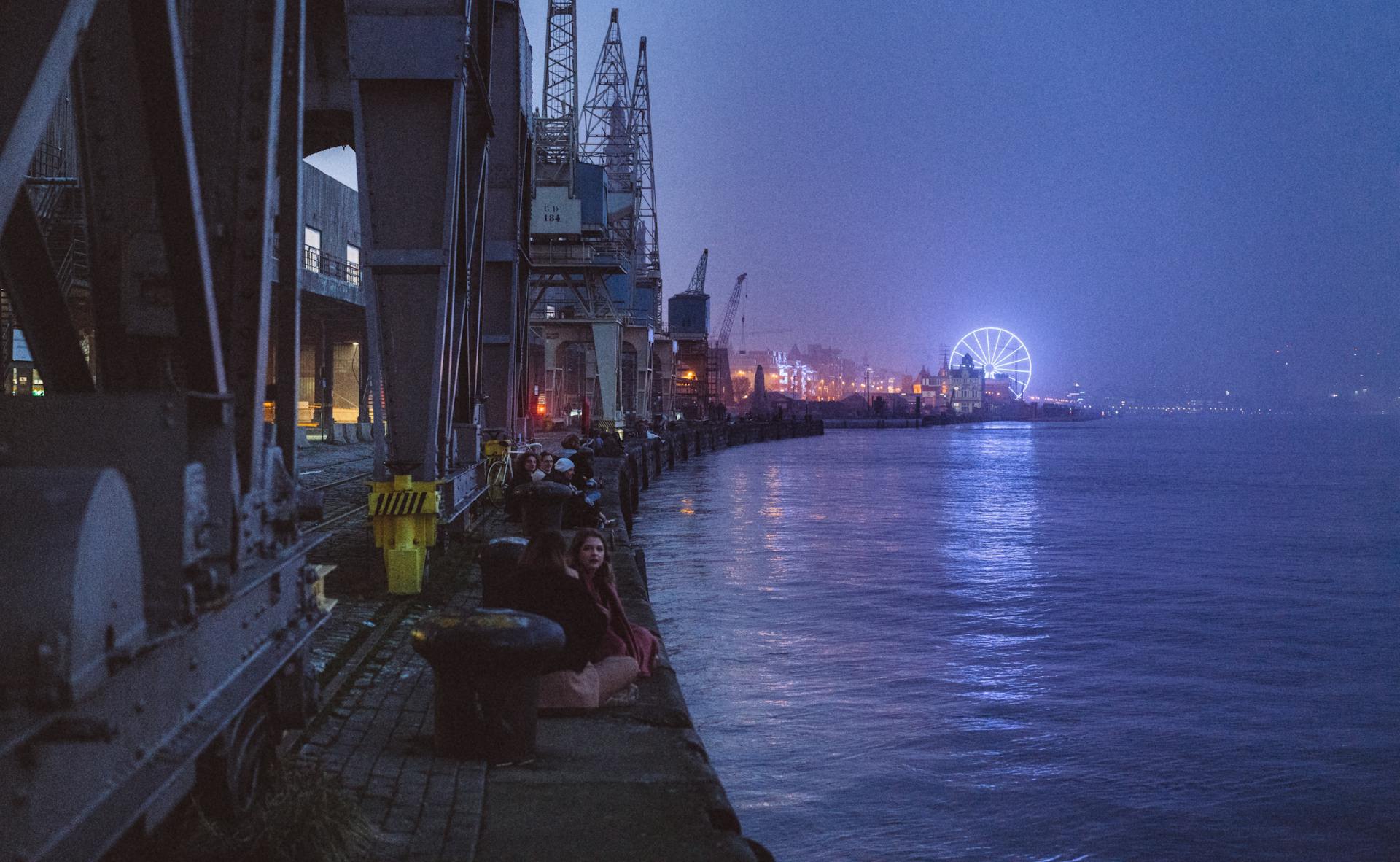
Thomas Kemp was a renowned shipbuilder in Baltimore, leaving a lasting legacy in the city's maritime history. Born in 1777, Kemp's early life laid the foundation for his future success.
Kemp's entry into the shipbuilding industry was marked by his apprenticeship under a skilled shipwright. This hands-on experience would later serve him well in his own shipbuilding endeavors.
As Kemp's skills and reputation grew, so did his business, with his shipyard becoming a prominent fixture in Baltimore's waterfront.
Early Career as a Shipbuilder
Thomas Kemp moved to Baltimore in 1803 from near Saint Michaels, Maryland on the Eastern Shore of Maryland.
He likely learned some of his shipbuilding skills at Dawson's wharf shipyard in St. Michaels.
In 1804, Kemp built a schooner with his brother Joseph.
Thomas Kemp's shipyard was mostly involved in making repairs to Baltimore vessels in the next few years.
He made repairs for Isaac McKim on the schooner Maryland, the brig Samuel and the Chesapeake, for Henry Craig on the Vigilante and the schooner Eclipse, and for John Conway on the schooner Nonsuch.
On July 6, 1805, Kemp purchased additional property bounded by Fountain, Fleet, and Washington streets at Fell's Point, expanding his business and establishing his own shipyard.
Kemp did not put his name on some of the ships he built due to his Quaker principles.
Ships Built by Kemp's Shipyard

Thomas Kemp's shipyard was a prolific builder of vessels during the early 19th century. Thomas and Joseph, a schooner built with his brother, Joseph, in 1804, was one of the first ships built by Kemp.
Kemp's shipyard built a variety of ships, including schooners, brigs, and sloops, ranging in size from 18 1/2 to 430 tons. The Lynx, a Baltimore clipper schooner, was one of the notable ships built by Kemp in 1806.
Here are some of the notable ships built by Kemp's shipyard between 1804 and 1822:
- Thomas and Joseph (1804), a schooner
- Lynx (1806), a Baltimore clipper schooner
- Maria (1806), a schooner
- Eidue (1806), a brig
- Leo (1807), a brig
- Rossie (1808), a schooner and a privateer
- USS Erie and Ontario (1813), sloops of war
- K&R (1822), a schooner
Notable Ships
Thomas Kemp's shipyard built a diverse range of vessels, from schooners to brigs. Some of these ships were even commissioned as privateers during the War of 1812.
One notable schooner is the Rossie, built in 1808 and later used as a privateer during the War of 1812.
It was 146 1/2 tons and built for John McFadon.
The USS OntarioMarmion, built in 1811, was a significant ship in the United States Navy, weighing 244 tons.
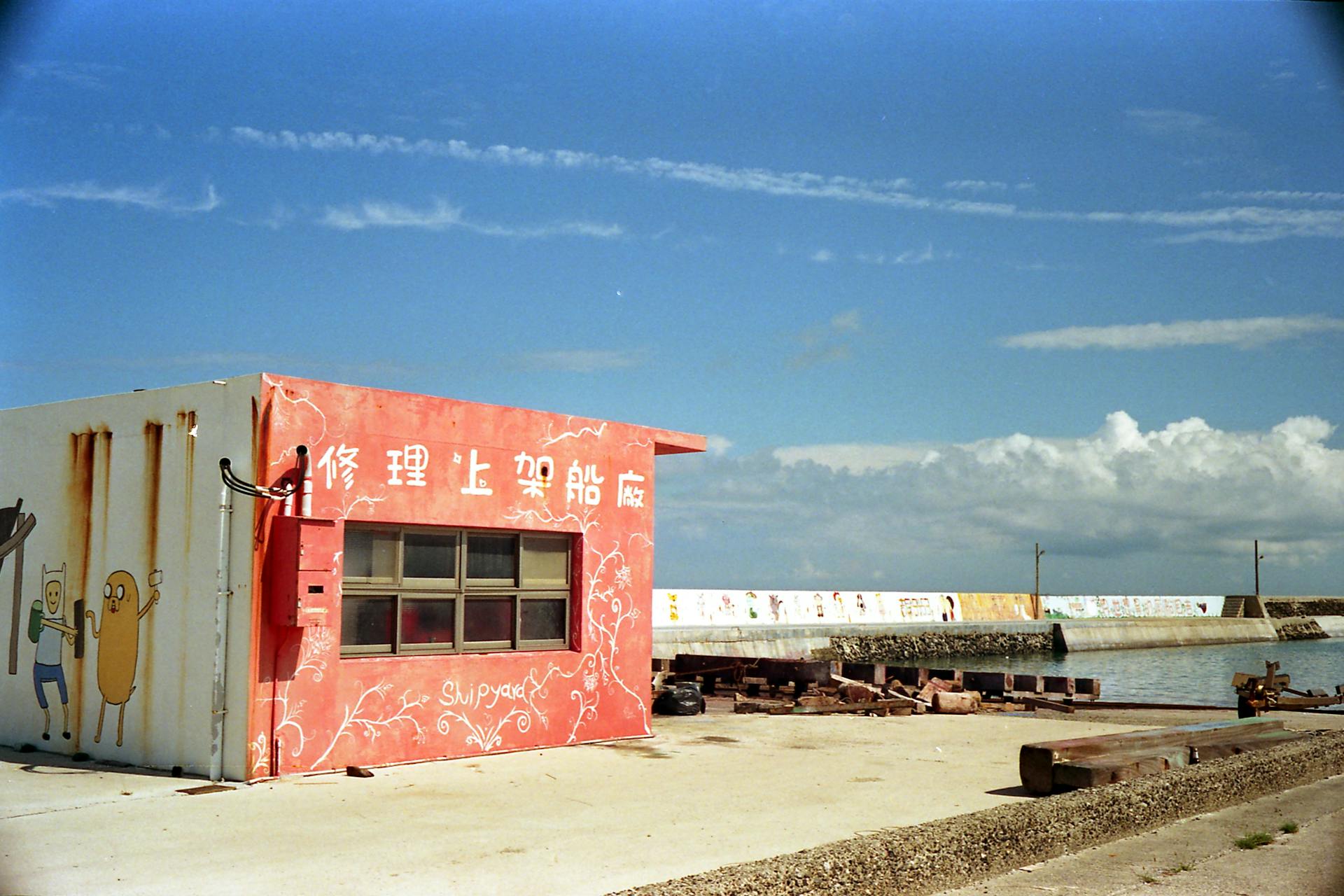
It was commissioned for Smith & Buchanan.
The Comet, built in 1810, was another notable schooner and privateer during the War of 1812, commanded by Captain Thomas Boyle.
It was 108 tons.
The Emperor of Russia, built in 1810, was a large ship, weighing 430 tons, and built for Charles F. Kalkman.
Here are some notable ships built by Kemp's shipyard, listed by year:
The Lynx, built in 1806, was a Baltimore clipper schooner for Henry Craig, weighing 99 tons.
It was a notable ship in its time.
The Chasseur, built in 1812, was a topsail schooner and privateer during the War of 1812, commanded by Captain Thomas Boyle.
It was 187 1/4 tons.
The Seagull, built in 1815, was a sloop for Captain James Martin.
Shipyard Operations
At Kemp's Shipyard, shipbuilding was a meticulous process that required precision and attention to detail. The yard was equipped with a 500-ton lifting capacity crane, which was used to lift and maneuver heavy steel blocks into place.
The shipyard's team of skilled shipwrights and engineers worked together to design and build each vessel from scratch. The yard's production process involved a combination of traditional craftsmanship and modern manufacturing techniques.
The first ship built at Kemp's Shipyard was the SS Great Britain, which was launched in 1843. This historic vessel was notable for its innovative use of iron hull plating.
The yard's shipbuilding process involved several stages, including keel laying, hull construction, and outfitting. The shipyard's team worked tirelessly to ensure that each vessel met the highest standards of quality and safety.
Kemp's Shipyard was capable of producing a wide range of vessels, from small yachts to large cargo ships. The yard's versatility and expertise made it a sought-after destination for shipowners and operators.
You might like: Arab Shipbuilding and Repair Yard Company
Post-1812 War
After the War of 1812, Thomas Kemp's shipbuilding business slowed down significantly.
Demand for new vessels declined sharply, and Kemp was forced to scale back his operations.
He returned to his farm, Wade's Point, on the Eastern Shore to live and focus on agriculture.
Kemp only built a few vessels after the war, a far cry from the busy shipbuilding days of his past.
Baltimore's Privateer Pride
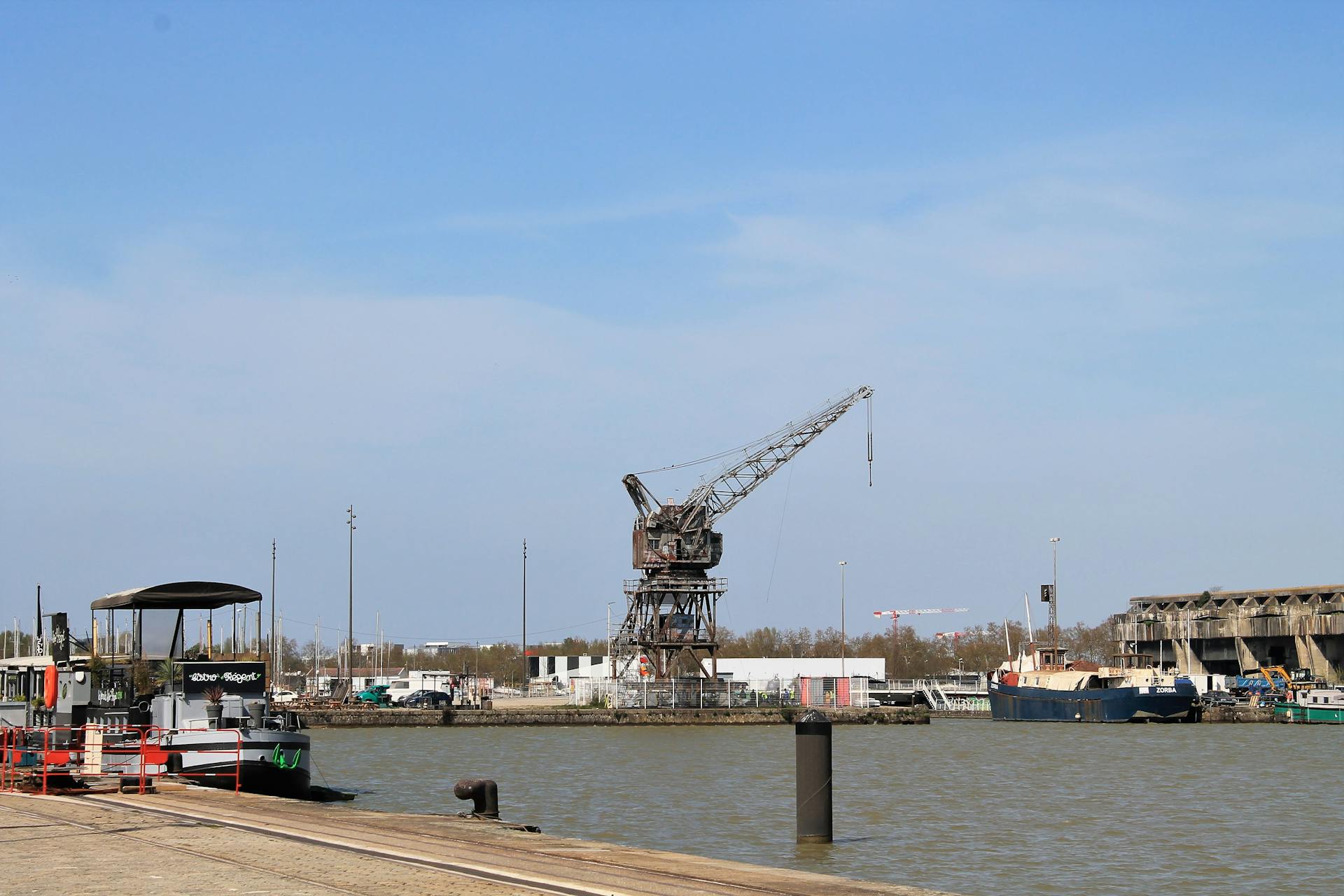
Baltimore's Privateer Pride was a significant aspect of the city's history, and Thomas Kemp played a crucial role in it.
Thomas Kemp was a shipbuilder who constructed the privateer ships that Baltimore's merchants and sailors used to attack British ships during the War of 1812.
Kemp's shipyard on Fell's Point was the perfect location for building privateers, as it was close to the harbor and had access to the Chesapeake Bay.
The privateers built by Kemp and other shipbuilders in Baltimore were incredibly successful, capturing numerous British ships and earning the city a reputation as a major privateering hub.
These privateers were not only a nuisance to the British but also brought in a significant amount of money for the city and its residents.
The privateering industry in Baltimore was so successful that it even attracted the attention of the British, who launched a series of attacks on the city in an attempt to put an end to it.
Despite the risks, the privateers continued to operate, and their success helped to cement Baltimore's place in American history.
Featured Images: pexels.com

